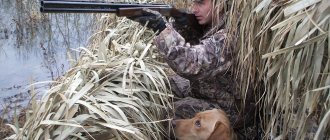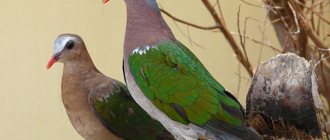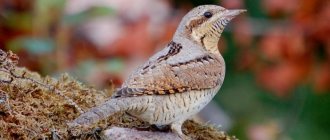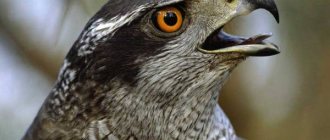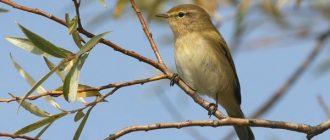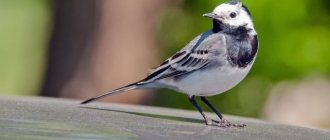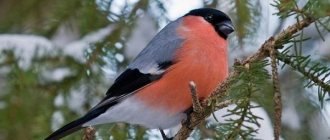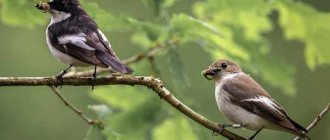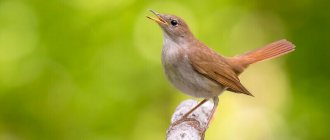| Latin name: | Milvinae |
| English name: | Kite |
| Kingdom: | Animals |
| Type: | Chordata |
| Class: | Birds |
| Squad: | Accipitridae |
| Family: | Accipitridae |
| Subfamily: | Kites |
| Genus in subfamily: | Brahminy kites (Haliastur), Black-breasted buzzard kites (Hamirostra), Tooth-billed kites (Harpagus), Common kites (Ictinia), Chubby kites (Lophoictinia), True kites (Milvus), Slug-eating kites (Rostrhamus) |
| Body length: | 34-66 cm |
| Wing length: | 41-66 cm |
| Wingspan: | 123—180 cm |
| Weight: | 370—1100 g |
Description of the bird
Kite - photo close up
Kites are large predators, they reach a height of about half a meter, and the weight of adults reaches 1 kg. The wings are narrow and long, their span is 1.5 m.
— Advertising —
The kite's beak is hook-shaped, weak, and its legs are short. The plumage color of kites is very diverse, usually dark and brown tones predominate, less often white or red.
Natural enemies of black kites
Photo: What a black kite looks like
There are no predators that purposefully hunt kites. Many other birds of prey, if settled next to them, get along well, for example, buzzards, spotted eagles, and goshawks. At the same time, attacks on kites by larger birds, such as eagles or gyrfalcons, are also possible, but they are relatively rare. More often, conflicts arise between the kites themselves; in such fights they can cause serious damage to each other.
Even if both birds remained alive, the wounds may prevent them from hunting and still lead to death - more kites die from the claws of their fellow tribesmen than from other birds. But this applies to adult individuals; chicks and eggs are threatened not only, and not even so much by large predators, but primarily by crows. These birds have a great tendency to destroy nests, and not even always for food; sometimes they do this when they are already full.
Once the kites are distracted for a while, the crows are already right there. Weasels and martens can also pose a threat to their nests. But still, a much larger number of kites die from human activity, primarily due to poisoning.
Interesting fact: In India, kites are especially numerous, and they are famous for their impudence. Dozens of these birds are constantly on duty at the markets, and as soon as someone throws away food, they swoop in and snatch the prey from each other. And they are not content with this, but snatch food directly from trays in eateries, sometimes even from people’s hands.
What does it eat?
The kite caught a rabbit.
The kite's main food is carrion - the corpses of small and large mammals, snakes, as well as a variety of animal waste. Birds also readily eat insects; less often, frogs and lizards, or other birds become the objects of their hunt. In addition, kites include live fish, crustaceans, mollusks and worms in their diet.
The diet of kites is useful because these birds of prey act as orderlies of forests and reservoirs, as they destroy sick animals, fish, and their corpses. Such nutrition is many times greater than the possible harm from the fact that kites eat meadow animals, chicks or small birds.
— Advertising —
Kites can also harm humans when they kidnap ducklings, chickens or goslings. To prevent such attacks, farmers often use special bird repellers.
Kites are lazy birds; they hunt well, but they do it rarely. Much more often, kites monitor the behavior of other animals and birds that are looking for prey, and even people; for example, by watching fishermen, kites find places rich in fish for themselves.
Nutrition
Birds are not picky about their diet. They eat almost all food of animal origin, while not disdaining even the remains and prey taken from other predators. In addition, in some species it forms the main part of the diet.
Kites eat everything they can get: small mammals, birds, reptiles, amphibians, fish, crustaceans. The slug eater's main food is large ampullaria snails.
For agriculture, kites bring both benefit and harm , on the one hand, taking control of the number of rodents, as well as acting as an orderly, and on the other hand, attacking small domestic animals.
Where does it live?
Habitat of the kite - photo
The distribution range of kites covers the countries of the Old World, especially large populations of these birds live in the east and south of Europe. To live, birds prefer wooded areas located near water bodies.
Kites are migratory birds; only certain groups are sedentary. Birds migrate in large flocks, which include up to hundreds of individuals, which is rare for birds of prey. The wintering grounds of kites are located in the warm countries of Asia and Africa, in a tropical climate.
Nesting
The breeding season of black kites marks the arrival of spring. At this time, birds return to their territory after wintering. Nests are built in trees at a height of about 10 meters. The most remote forest areas are chosen so that the nests are inconspicuous. Some individuals can organize nests on rocks. The size of the nest can reach a diameter of a meter. Birds prefer to nest in the same nests until they become completely unsuitable. Every year the birds are busy improving their nests. The materials used are various rags, garbage, branches and anything that can be found nearby.
Kinds
Whistling kite (Haliastur sphenurus)
Whistling kite in flight
A medium-sized bird with a small head and a long tail. The body length is from 50 to 60 cm, the wingspan reaches 146 cm. The weight ranges from 380 to 1050 g. Females are larger than males, but do not differ in plumage color. In adults, the head, chest and tail are dark yellow, the wings are brown, with black flight feathers. Young birds are motley, with red-brown stripes and pale spots on the wings. The paws are not feathered, light, short.
The species is distributed in Australia, New Caledonia, New Guinea, where it inhabits woodlands located near water bodies. Resident bird.
The bird got its name because of the loud whistling calls it makes while flying.
Brahmin kite (Haliastur indus)
Small Brahminy kite - photo
A medium-sized bird of prey that lives in the Indian subcontinent, southeast Asia, and Australia. This species can be found both on the plains and in the Himalayas at altitudes up to 1500 meters above sea level. To live, the Brahman kite chooses coasts or swamps, where it finds its food - fish.
The plumage color of adults is reddish-brown, the head and chest are white. Based on these signs, the Brahman kite can be easily distinguished from afar. The species is sedentary and can roam only during the rainy season.
Social slug-eating kite (Rostrhamus sociabilis)
A slug-eating kite sits on a wooden pole.
The bird's body length is from 35 to 42 cm, weight reaches 400 g. This species has pronounced sexual dimorphism. Males have jet black plumage, a gray tail with a wide black stripe. The eyes and legs are red. Females are feathered brown with brown streaks. The species is distinguished by a thin beak with an elongated, down-curved upper beak, which is necessary for the bird in order to get its food of freshwater snails of the genus Pomacea from shells.
The species' habitat includes the Florida peninsula, Cuba, Central and South America.
Red kite (Milvus milvus)
Red kite in flight - photo
The species does not have sexual dimorphism. The plumage of the body, tail on top and coverts on the wings is reddish-brown, with dark stripes on the chest. Paws are bright yellow. In young individuals, the chest and belly are light. Amber rainbow. The beak is yellow at the base, dark gray or black at the tip, sharp, curved downwards. The wings and tail are long. The tail has a fork-shaped notch, which is less pronounced in young birds.
Outwardly, the red kite is very similar to the black one, but it has a deeper notch on its tail, and in general it is larger and lighter than its relative.
The species is distributed in Scandinavia, in central and southern Europe, the Caucasus, Asia Minor, Iran, Africa, the Canary Islands and the Cape Verde Islands. Birds that nest in the north and east of the range (in Sweden, Poland, Germany, Russia, Ukraine, Belarus) are migratory; in winter they migrate south and west, to the Mediterranean regions. Individuals of the southwestern range are sedentary.
The red kite lives in deciduous and mixed forests, close to open spaces.
In the 20th century, the population of red kites declined sharply. The main reason was the persecution of birds by humans (hunting them, collecting eggs, using poisoned baits), as well as the economic use of lands on which kites are accustomed to nest. Today, European red kite populations are beginning to recover.
Black kite (Milvus migrans)
Black kite in its natural habitat
The bird's body length is from 50 to 60 cm, weight is about 1 kg, wing length is from 41 to 51 cm, wingspan is from 140 to 155 cm. Females are larger than males.
In adult birds, the back is dark brown, the crown is white and black, the wings are dark brown, the belly is brown, with a reddish tint. The beak and paws are yellow. The iris is pale brown or yellow-brown in color.
The species lives in Africa (except the Sahara Desert), Madagascar, Asia, the Philippine Islands, Sulawesi Island, New Guinea, and northern Australia. Large populations of the black kite live in Russia and Ukraine. The bird usually settles in the forest-steppe zone, not far from large rivers, and is sometimes found even in large cities, for example, in Novosibirsk and Barnaul. In the Palearctic the species is migratory, in other areas of its range it is sedentary.
Number
Black kites are victims of industrial progress.
The population size has decreased noticeably in recent years, with the most serious situation in the European part of Russia, but in other regions the population has also declined.
This decrease is explained by the use of pesticides in agricultural activities. For example, in China, critical levels of mercury were found in the bodies of dead black kites. Most likely, mercury enters the natural environment as a result of the chemical industry.
It turns out that human civilization is gradually exterminating the once large population, and it is extremely difficult to correct the current situation.
If you find an error, please select a piece of text and press Ctrl+Enter.
Reproduction
A kite chick in a nest in Siberia
Kites often nest in large flocks and even form large colonies.
Birds make their nests on the tops or forks of trees at high altitudes, choosing trees such as pine, linden or oak, and use them for several years in a row. The building material for the nest is usually dry twigs and other types of vegetation. The inside of the nest is lined with sheep wool.
In one clutch, the female has one or several white eggs with reddish spots or a brown pattern, which the female lays every three days in April or early May.
Incubation from 31 to 38 days is carried out exclusively by the female kite, while the male provides her with food. The chicks are born covered in down. From the very first days of life, they behave very aggressively, even cruelly, and fights between chicks often lead to the death of the weakest of them.
At the age of five to six weeks, the chicks learn to climb over branches, and a few days later they stand on their wings, after which they leave the nest and their parents.
The average lifespan of kites is about 14 years; it happens that birds live longer, up to 25 years. In captivity, kites live up to 38 years.
Lifestyle
Black kites differ from many birds in that they often form colonies. They tend to soar for a long time without flapping their wings. Most of the time they float calmly in the air. Some birds can fly to such great heights that they can barely be seen. The rest of the time is spent searching for easy prey.
It is common for these birds to decorate their nest sites. In this way they show their strength to other birds. In turn, birds that notice this can start clashes with the black kite. Weak and sick birds prefer not to use any additional elements in arranging the nest, so as not to provoke other birds to fights.
Habitat
- Animals of Brazil
- Tarantula spider
- 34 facts about lions
- Lynx
- 37 facts about cheetahs
- Scolopendra
The distribution area of the black kite is extremely large. It lives in Europe, Asia, and Africa. It inhabits both hot countries and cold expanses of Siberia.
With the onset of cold weather, black kites living in the northern regions fly to India and Australia for the winter, as well as to Africa, where they mix with local black kites.
We can say that this bird of prey is omnipresent and has conquered the entire globe - except, probably, the polar regions. Naturally, with such a wide range, several subspecies have formed.
The habitats of black kites are various forests and water meadows; Usually there are bodies of water in the area of residence. It happens that they fly into villages and cities.
Trees are also a necessary condition for kites to live, regardless of the terrain, since they build their nests on them.
Where do hawks fly for the winter?
The only migratory population is considered to be that which nests in the north and northwest of North America - they migrate south for the winter.
Interesting materials:
How long can rice milk porridge be stored in the refrigerator? How long can Olivier salad be stored in the refrigerator? How long can you store herring under a fur coat in the refrigerator? How long can an ostrich egg be stored in the refrigerator? How long can fresh chanterelles be stored in the refrigerator? How long can you keep cooked broccoli in the refrigerator? How long can you store in the freezer? How long can you store boiled broccoli? How long can boiled condensed milk be stored in the refrigerator? How long can boiled sausage be stored?


